What did the Romans ever do for us? Researchers flock to Vindolanda, Hadrian’s Wall to answer the question from the chickens’ perspective.
As the project draws to the end of its first year, the team traveled to the world-famous visitor attraction of Vindolanda Roman Fort, on Hadrian’s Wall, to share their preliminary findings with members of the public. The day was organised as part of the Being Human Festival, the UK’s first national festival of the humanities, and included interactive talks, handling sessions, living history, art and craft activities and experiments. A film about what we got up to can be found here
We chose Vindolanda for this event because it is one of the earliest archaeological sites in Britain from which substantial numbers of chicken remains have been recovered. Chickens are not native to Britain. Where in the world did they come from originally? Why were they domesticated in the first place? What impact have these domestic fowl had on human life? How do we know and why does it matter? These were just some of the questions being asked and answered during the day.
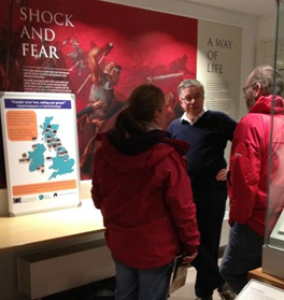
Figure 1. Terry O’Connor discussed the issues of animal invasions and extinctions.
As well as the chickens, we talked to visitors about other animals that have been introduced to Britain throughout prehistory and more recently. Terry O’Connor (University of York) asked what do we think of as a ‘native’ species that ‘belongs’ here, and how should we regard deliberate or accidental introductions? Some visitors were surprised to learn that animals such as lynx and beaver used to live in Britain, and most had interesting things to say about the conservation and reintroduction of animals such as kites and wolves. Those conversations underlined just how much the animals around us are a cultural resource as well as part of our natural history.
Although the Romans were not the first to introduce chickens to the island (they were brought here in the Iron Age, hundreds of years before the Romans arrived) it was due to Roman influence that they became popular and first came to be viewed as ‘food’. We know this in part because the chicken remains from Vindolanda show evidence of butchery, indicating that the birds were prepared for the table and eaten, but also from the ancient ‘shopping lists’ detailed in the remarkably preserved writing tablets from the fort (Figure 2).
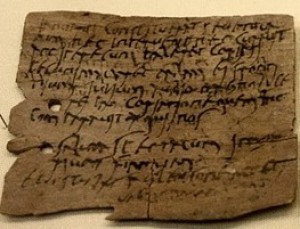
Figure 2: An example of the Vindolanda tablets (Michel Wal)
One of the Vindolanda tables gives instructions to buy “chickens, twenty…a hundred or two hundred eggs, if they are for sale there at a fair price", so clearly egg production became important during the Roman period too. Whilst these early references to poultry and egg production provide very useful information, we are exploring how widespread such practices were in the past. In cases where no documentary record exists, archaeological finds – in particular chicken bones, eggshell and even the pots that they were cooked in – are the most reliable sources of evidence.
Various activities demonstrated how past egg and meat production can be recognised. For instance, Julia Best, the PDRA from the University of Bournemouth, was able to show how by looking at the microscopic structures of ancient eggshell fragments it is possible to determine whether or not chicks had hatched from them – if all the eggshells indicate that the chicks hatched it means that people were probably not eating the eggs but rather raising birds for meat (Figure 3). By contrast, it the egg shells were mainly freshly laid, this would suggest that egg production was being focused on. Visitors could also handle archaeological bones containing medullary bone (a mineral deposit laid down inside the bone shaft by laying hens which they use to form eggshell), and discover how this can help archaeologists investigate breed profiles and food production in the past.

Figure 3: Julia talks egg production. The images below show internal shell structure of eggs. That on the left is of a freshly laid egg. As the chick develops (middle image) minerals from the eggshell are drawn upon to support its growth and, as a result, the texture of the shell changes, becoming increasingly pitted (right image).
Many visitors enjoyed the opportunity to get ‘hands-on’ with archaeological material and learn the process of zooarchaeological recording and pottery analysis. Richard Thomas (University of Leicester) and Andre Colonese (University of York) teamed up to talk to visitors about the kinds of information that can be extracted from chicken bones and pots recovered from archaeological sites. Using an example of a young chicken that had been deposited inside a Roman pot (Figure 4, left), they explained how it is possible to determine how old the chicken was when it died, if it was male or female, whether it had been butchered, and characterise its size and shape. Chemical analysis will reveal whether chickens were actually cooked inside the pot, because animal fats can leach into the porous fabric of the pot and be detected.


Figure 4: mid-3rd/4th-century pot from the Roman town of Alchester buried with a chicken inside (left). Whilst Richard and Andre discussed ceramics and bones, Holly explained how chickens also played an important role in ancient magic and medicine.
While chickens and eggs were used as food in the Roman period, this was not their only function. The writings of Roman author, Pliny the Elder, tell us that chickens and eggs were very important in zootherapy – that is, animals as medicinal resources. Holly Miller, PDRA from the University of Nottingham, was taking people through the different illnesses that could be ‘cured’ by various chicken remedies, and talking about how perceptions of ‘medicines’, ‘magic’ and ‘religion’, and the associated uses of chickens, has changed through time (Figure 4, right).
The value of chickens in the Roman world certainly helped the species on its journey to becoming the most widespread livestock animal on the planet. Many visitors had not previously considered the origins of the chicken or how far it had travelled, both geographically but also in terms of evolution. Visitors were encouraged to learn how genetic studies can provide information about the origins and spread of ancient chicken populations, in turn revealing evidence for human migration and trade. Ophélie Lebrasseur, PDRA from the University of Oxford, explained how the mitochondrial DNA sequences of modern chickens could be grouped into ‘clades’ with some clades being specific to certain world regions. By matching the mitochondrial DNA sequences extracted from Roman chicken bones to those of modern chicken populations and their associated clades, members of the public were able to pinpoint the origin of these Roman chickens. She also talked about how the identification of specific genes underlying phenotypic and behavioural traits could help identify which traits were selected for at the beginning of domestication and which traits may have been selected later. This in turn helps our understanding of the domestication process and associated selection pressures for particular traits.
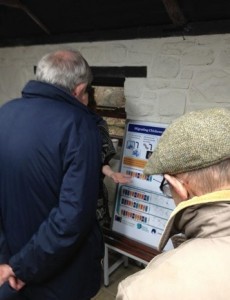
Figure 5: Matching the mitochondrial DNA sequence of a Roman chicken bone to the mitochondrial DNA sequences of modern chicken populations and associated clades.
Conscious selection for favourable characteristics such as improved health, increased aggression, a longer laying season or a larger carcass, have produced a wide diversity of chicken breeds in an array of different shapes and sizes. These practical traits have been enhanced by purely ornamental features including the fluffy plumage of the Silkie, the crest of the Poland and the distinctive voices of the ‘long-crower’ breeds, indicating that humans’ love of novelty and beauty have also been a significant contributory factor in breed development.
The aesthetic significance of chickens in clear from the iconographic record: Bournemouth PhD student, Mike Feider, encouraged visitors to explore visual representations of chickens (past and present) and consider how these images reveal human attitudes to animals and the natural world. Mike’s activity worked well alongside that designed by PhD student Alison Foster (University of Leicester) who used a factsheet-based quiz to describe the characteristics and history of numerous breeds and their adaptability to different environmental conditions. Using this information, visitors were able to discover the country of origin of each breed and place representative ‘chicken pix’ on a map of the world. The completed map illustrated both the global spread of the chicken and the enormous variety within the species.
Other scientific techniques were also explained during the day. For example, Idoia Grau (University of Nottingham) introduced visitors to bone chemistry and how this can provide important information about how chickens were fed in the past. Analysis of the chicken bones from Vindolanda suggests that they may have had a very rich diet; perhaps they were being spoilt by the Roman soldiers who indulged them with table scraps! The idea that the Vindolanda chickens were ‘happy’ is also suggested by the fact their footprints have been found on clay tiles from the site, evidence that they were able to roam wherever they chose rather than being restricted in coops (Figure 6).
The apparently free-range lifestyle of Vindolanda’s chickens may explain why few bones from the site have yet been found to show evidence of trauma, disease or infection – issues that the team is investigating in order to model the impact of different chicken-keeping regimes through time.
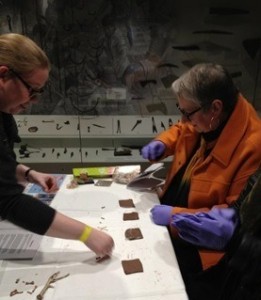
Figure 6: Taking inspiration from Roman chicken-prints, visitors to Vindolanda were able to make their own chicken foot-print tiles.
Both archaeological and textual evidence of past chicken injury and disease were demonstrated and discussed by Tyr Fothergill, a project PDRA at the University of Leicester. A series of photographic and radiographic displays covering a range of archaeologically-detectable bacterial and viral infections as well as parasitic infestation were presented to visitors. They were also offered the opportunity to handle archaeological examples of pathological chicken bones and interact with a 3D model of a bone showing signs of osteopetrosis, a disease which was probably introduced to Britain by the Romans. Visitors were also invited to probe the Wall of Facts True-or-False quiz to test their knowledge or learn unexpected titbits about the complex and lengthy history of human-chicken relationships, particularly with regard to the many and varying ways in which chickens have been perceived, kept and cared for throughout our shared histories.
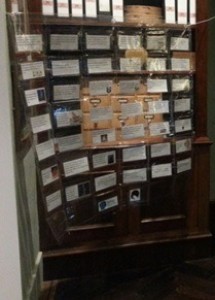
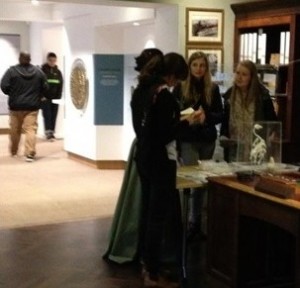
Figure 7: Tyr’s Wall of Chicken Facts and Disease Displays.
Alongside the archaeological and historical story, we demonstrated how our research, that is examining thousands of years of evidence, is of direct relevance to some of the biggest challenges facing society today: food security, antibiotic resistance, biodiversity, health and well-being. It is already clear that whilst archaeological populations of chickens show great variability in their genes and diet, modern commercial stock show worryingly low dietary and genetic diversity, a situation that reduces a population’s resilience to disease. Modern poultry producers are aware of such problems and therefore many farmers use antibiotics routinely to keep their flocks healthy. It is this practice that is partly responsible for the rise of antibiotic resistant bacteria – a situation that has significant implications for human health.
It is this deep connection between people and chickens (and all other animals) that the team was keen to highlight because, over the last few hundred years, human culture has forgotten how linked the fortunes of people and animals are. At Vindolanda, the team was able to make this point even more forcibly with the help of HenPower, a project run by North East charity Equal Arts, which supports older people in hen-keeping as a way of tackling loneliness and isolation. Active older volunteers from the project, known as the ‘Hensioners’ were on hand at Vindolanda to share their chicken-keeping expertise and talk about the benefits HenPower is having in care settings across the region.
The chicken-keepers among the visitors and the Hensioners were encouraged to share their chicken stories with us and we found that they had varying levels of personal attachment to their chickens and different reasons for keeping them (Figure 8). Some of them keep them for the supply of fresh eggs and meat and cull the cockerels they raise. Others perceive them less as livestock, but name them, recognize their individual characters or appreciate the beauty and diversity in chicken breeds.
Figure 8: Roehampton PhD student, Eva Zoubek, gathered data about modern chicken keeping
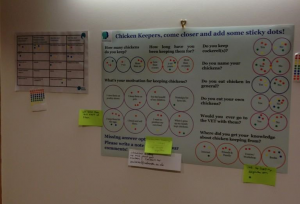
As both the Hensioners and the archaeological evidence from Vindolanda demonstrate, chickens are more than just providers of meat and eggs. They can be companions and give texture to human lives; they are part of our cultural history and how we treat them today will likely determine our own future.
Acknowledgements
We are grateful to Vindolanda Trust for supporting the event and waiving entry fees for the day. More details about their museum can be found at www.vindolanda.com and via Twitter @VindolandaTrust. The Being Human Festival was led by the School of Advanced Study, in partnership with AHRC and the British Academy.
To find out more about the Hen Power project visit http://www.equalarts.org.uk/pages/henpower.php or follow them on Twitter @HenPowerProject
This research is funded by the Arts and Humanities Research Council (AHRC Grant Ref: AH/L006979/1). For more information visit www.scicultchickens.org and follow the team on twitter @Chicken_Project.
Follow us
Keep up to date with the latest project news via our Twitter feed.
- — 5 years 8 months ago
- — 6 years 5 months ago
- — 6 years 6 months ago
- — 6 years 7 months ago

 ChickenCoop
ChickenCoop